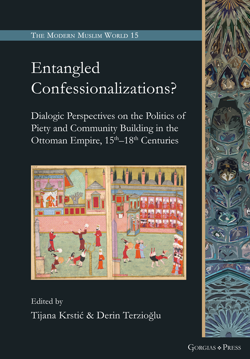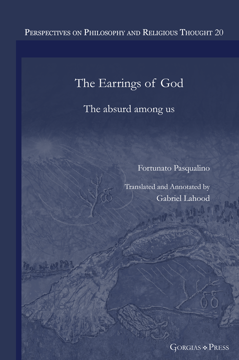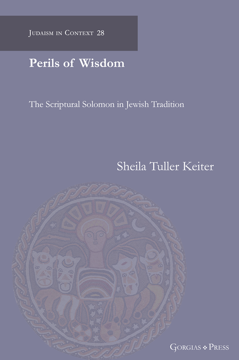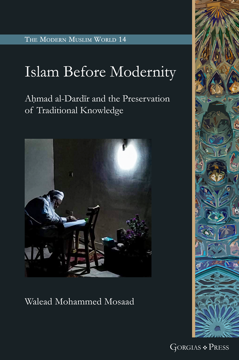Life of the Blessed Virgin Mary
Translated from Syriac to Malayalam by Rev. Fr. Kuriyakos Pallikkapparambil (1926 AD); Translated from Malayalam to English by Sarah Knight; With a Foreword by Sebastian P. Brock
Series: Texts from Christian Late Antiquity 68
ISBN: 978-1-4632-4355-5
Different parts of the Life of the Blessed Virgin Mary are known from the second century onwards. Translations and adaptations into Syriac and other languages also became available from very early centuries. The compilation in the Syriac language was translated into Malayalam in 1925, but an English translation containing the full text did not exist at all. This gap has been filled now by this work. Sebastian Brock’s Foreword gives important information on the background and authenticity of the different sources that form the basis of the text. This biography is unique in that it brings together some very early accounts of the birth of Mary, the birth of Jesus, the flight into Egypt, and most importantly, the very rare account of the ‘Dormition’ or ‘falling asleep’ of the Blessed Mother.
$55.00 (USD)
Entangled Confessionalizations?
Dialogic Perspectives on the Politics of Piety and Community Building in the Ottoman Empire, 15th-18th Centuries
Edited by Tijana Krstić & Derin Terzioğlu
Series: The Modern Muslim World 15
ISBN: 978-1-4632-4357-9
This volume explores the emergence of discourses of orthodoxy and orthopraxy in the Ottoman Empire between the 15th and 18th centuries, through empirical studies on confessional dynamics in early modern Muslim, Christian and Jewish sources.
$195.00 (USD)
The Earrings of God
The absurd among us
By Fortunato Pasqualino; Translated and Annotated by Gabriel Lahood
ISBN: 978-1-4632-4359-3
Life is full of absurdities, and human misperception of such absurdities leads to a state of unrest and fear that require meaning and direction for a happy life. F. Pasqualino addresses here samples of existential absurdities, and discusses solutions offered: Taoism offers in its paradoxes a natural self-help resource. Buddhism offers a natural wisdom that is informed by a supernatural impersonal Absolute. Hinduism offers a plethora of personal gods who embody the impersonal Absolute. The Judeo-Christian-Islamic wisdom teaches a personal Absolute God whose being is distinct from, but involved with human and non-human beings. The unifying feature of these wisdoms is: Obedience to, and love of, the Absolute can rectify human misperception of life’s absurdities, dissipate fear, and provide meaning, value and a serene life. Jesus Christ, the incarnate Absolute in Christian theology, chose to become an exemplar innocent victim for love, thus giving the most absurd but victoriously redeeming love that provides a new and sublime perspective on life’s absurdities. G. Lahood’s translation and commentary make the Italian masterpiece available to an English-speaking audience.
$123.95 (USD)
The Theology of ‘Ammār al-Basrī
Commending Christianity within Islamic Culture
Series: Gorgias Eastern Christian Studies 62
ISBN: 978-1-4632-4361-6
ʿAmmār al-Baṣrī (d.c. 850) was the first Christian to write a systematic theology in Arabic, the language of the Muslim rulers of ʿAmmār’s Middle East. This study of his two works that were only discovered in the 1970’s seeks to analyse the way he defends Christian beliefs from criticism by Muslims over the authenticity of the Gospels, the Trinity, the divinity of Christ, the Incarnation, the death of Christ by crucifixion, the resurrection of Christ, and the nature of the afterlife. ʿAmmār al-Baṣrī wrote his theology in dialogue with Muslim thinkers of his time and his work offers guidance to Christians in today’s world who live in Islamic contexts in how to relate Christian convictions to a Muslim audience.
$114.95 (USD)
Emerging Horizons. 21st Century Approaches to the Study of Midrash
Proceedings of the Midrash Section, Society of Biblical Literature, volume 9
Edited by W. David Nelson & Rivka Ulmer
Series: Judaism in Context 26
ISBN: 978-1-4632-4365-4
The chapters in Emerging Horizons: 21st Century Approaches to the Study of Midrash pertain to an intriguing midrash that appears in a Masoretic context, the Qur’anic narrative of the red cow, midrashic narratives that rabbinize enemies of Israel, the death of Moses, emotions in rabbinic literature, and yelammedenu units in midrashic works.
$114.95 (USD)
That Nothing May Be Lost
Papers from the Twelfth Birmingham Colloquium on the Textual Criticism of the New Testament
Series: Texts and Studies (Third Series) 29
ISBN: 978-1-4632-4367-8
Fragmentary material comprises a significant part of the manuscript tradition of the New Testament. Whether it be tattered papyrus documents, the abbreviated citation of biblical texts in early Christian writings, or the scattering of once-whole manuscripts, the story of the New Testament is a gathering of fragments—in all their forms—in the hopes that “nothing may be lost.” This volume is a result of the Twelfth Birmingham Colloquium on the Textual Criticism of the New Testament, wherein presenters were invited to approach the theme of “fragments” from any philological or philosophical framework. Chapters discuss the possible forgery of a biblical papyrus, the dismemberment of a sixteenth-century lectionary manuscript, and the Arabic text of Romans preserved in a fragmentary bilingual codex. Elsewhere, software tools are employed to re-assess the readings of manuscripts digitised in decades past and to re-evaluate the stemma of a family of manuscripts. Further contributions consider the fragments of the biblical text contained in patristic commentaries and Byzantine catenae. The wide-ranging scope of the research contained in this volume reflects the need to examine these pieces of the past so that the shape of research in the present accurately illustrates the tapestry that is the history of the New Testament texts.
$114.95 (USD)
The Quran_Key Word Collocations_Bundle
By Elie Wardini
ISBN: 978-1-4632-4371-5
This bundle brings together the 16 volumes of Elie Wardini's The Quran: Key Word Collocations. The aim of these volumes is to present the Quran as raw data with as little interpretation as possible. The digital text used for this purpose is the Uthmani text of the Tanzil Quran Text. In the present series, Collocation is defined as a Key Word, here adjectives, nouns, proper nouns and verbs, forming the center of a cluster with four co-occurring Key Words (1° and 2° of proximity), the first two to the left and to the right, where available. Every Collocation of each Key Word in the Quran is presented in context, as a rule with six words to the right and six to the left of it, where available or where the formatting permits. The central Key Words have been grouped by root > lemma. Classical dictionaries and Quran commentaries, as well as modern Quran dictionaries have been consulted.
$2,999.99 (USD)
In Every Generation
Studies in the Evolution and Formation of the Passover Haggadah
By Jay Rovner
Series: Judaism in Context 27
ISBN: 978-1-4632-4376-0
The Passover Haggadah, the quintessential Jewish book, began taking shape in the period of the Mishnah and the Talmud (ca. 100-600 CE). Even by 600, it did not look like it does today. Major portions were wanting, e.g., the story of eminent sages at a seder in Bene Beraq; the typology of the four sons; the midrashic expansion of the story of the exodus; the song Dayyenu. Those compositions (mostly) or borrowings were incorporated into the Haggadah between ca. 600-900 (the Geonic period). Such selections completed the Haggadah, producing the book used at Passover Seders to the present day. This study shows how the section of the Passover Haggdah known as maggid (“recounting”) achieved its comprehensive structure and contents between ca. 600 and 900 CE (the geonic period).
$115.00 (USD) $92.00 (USD)
Perils of Wisdom
The Scriptural Solomon in Jewish Tradition
Series: Judaism in Context 28
ISBN: 978-1-4632-4378-4
Perils of Wisdom engages the biblical Solomon narrative that appears in the Book of Kings and its reception by Jewish texts from scriptural sources through the traditional commentaries of the Middle Ages. By systematically following the thread of exegesis through biblical, rabbinic, targumic, and medieval Jewish texts, and by examining their interplay with other ancient, Christian, and Islamic treatments of Solomon, Keiter traces the emergence and ascendance of an apologetic image of Solomon that has colored Jewish perceptions of the biblical king ever since.
$140.00 (USD)
Islam before Modernity
Aḥmad al-Dardīr and the Preservation of Traditional Knowledge
Series: The Modern Muslim World 14
ISBN: 978-1-4632-4380-7
This book examines the role of tradition and discursive knowledge transmission on the formation of the ‘ulamā’, the learned scholarly class in Islam, and their approach to the articulation of the Islamic disciplines. This book argues that a useful framework for evaluating the intellectual contributions of post-classical scholars such as Aḥmad ibn Muḥammad al-Dardīr involves preserving, upholding, and maintaining the Islamic tradition, including the intellectual “sub-traditions” that came to define it.
$130.00 (USD)









